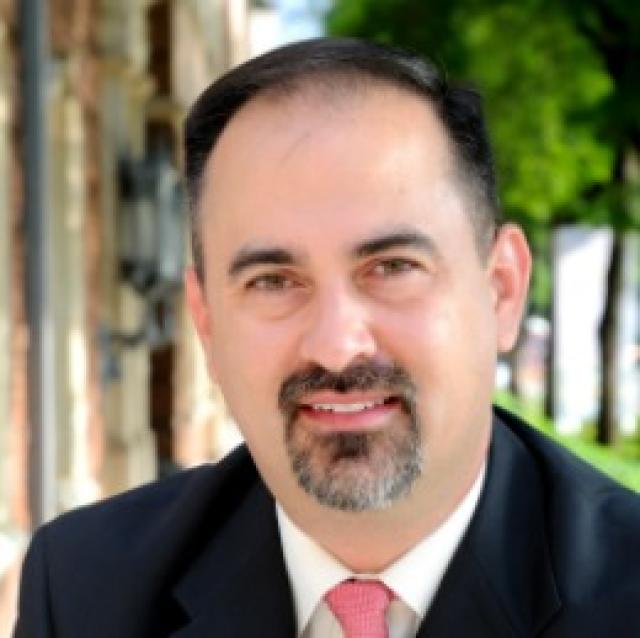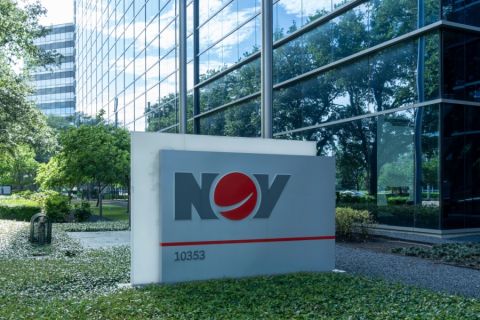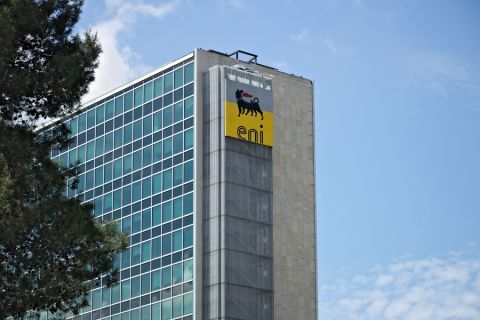
The Permian basin is a hot property right now, drawing upstream producers—and midstream operators to serve them—as its multipay opportunities grow. Dallas-based Lucid Energy’s chief executive Michael J. Latchem discusses his team’s Permian niche and the promising future of the big oil province.
MIDSTREAM: You have a strong background in organic midstream development. What attracted you to the business?
LATCHEM: I’m an engineer by background, and I found my way into the midstream business early on through some consulting work. I quickly realized on the midstream side—particularly the gas side—that the ability to own the responsibility for a project and be able to design it, implement it, construct it and operate that project from start to finish was kind of a neat concept for a younger guy. It’s very exciting to be doing that now.
What leads me and our team at Lucid right now is the migration of our engineering and operating backgrounds into commercial development. The ability to look at a project and solve a problem for our customers is what we’re focused on. That aligns well with the engineering and operating focus that I, and the bulk of our team, had early on.
In a commercial development, it’s still the same task: Try to find a creative solution to solve somebody’s problem. That’s really what our team is doing now with customers, not just looking at a project, but coming up with a creative way to solve the immediate, near-term problem that the customer has—getting their commodities to market and then matching that with quick execution and readily available capital. Execute quickly, it’s a great business model and a recipe for success.
MIDSTREAM: Capital doesn’t seem to be a problem for midstream operators. What draws investors to the sector, compared to other growth businesses?
LATCHEM: I think the situation is changing—in a good way—for investors, compared to historical midstream investments. What the unconventional plays have done is give an investor an opportunity to look at a much longer-term investment horizon. A basin—like the Permian or Eagle Ford or any basin that has a big unconventional reservoir underlying it—gives people the opportunity to look at 50- or 100-year production opportunities. That didn't exist before unconventional resources entered the scene.
I think investors are excited about the opportunity for long-term prospects versus quick depletion of a conventional field. Why that has come about so rapidly over the last four or five years has predominantly been based on the focus on unconventional oil reservoirs that are being rapidly developed, like the Eagle Ford, Bakken—and the Permian—in a big way. A lot of the oil infrastructure that has historically been in place is not adequate to handle some of the new production requirements. So a lot of new infrastructure will be required in a very rapid time frame, and that story will continue to develop as these plays continue to mature.
MIDSTREAM: What opportunities are there for greenfield developments?
LATCHEM: I’d break up greenfield opportunities into two categories. There is the gathering aspect of gas and oil that producers may or may not do themselves. There’s going to be a tremendous amount of that type of infrastructure available for investment. From a midstream perspective there’s an opportunity—so long as it’s cost-effective for the producer to make that decision—for a lot of smaller infrastructure that can be installed with great returns.
The second aspect of greenfield opportunities is transmission pipelines that take that same production to market. Whether it’s short-haul transmission pipelines reaching two or three central market hubs around the Permian or long-haul transmission pipelines reaching non-local markets, there are a half-a-dozen to a dozen different projects that are ongoing.
And there are companies that are focused on each of those niches. There are companies that look to provide upstream gathering. There are companies that want to provide only the short-haul transmission, and groups—like Lucid—that have a pretty good pallet of projects to pursue that give us a long-term investment opportunity.
There are a couple of new projects, either projects that are being constructed right now or will be available over the next two years going to the Gulf Coast, that appear to be solving the near-term capacity needs for the Permian.
But if commodity prices continue to stay as robust as they are and we see a continued growth in the horizontal rig count in the Permian, then there’s going to be additional infrastructure required. New infrastructure running to Cushing [Oklahoma, oil hub] or additional infrastructure heading west are all options that we’re aware of that different parties are entertaining. Some of those projects are very interesting to Lucid and play well into Lucid’s crude oil gathering plans.
MIDSTREAM: You have focused on serving the east side of the Permian basin. What’s the status of your operations there?
LATCHEM: Lucid has constructed and commissioned a little more than 300 miles of pipeline in the last 18 months.We’ve also installed and commissioned three cryogenic plants on the east side of the Permian. Lucid is continuing to expand its footprint for new dedications, which also leads us to additional plant expansions.
We’ve got a fourth cryogenic plant that we will be installing later in 2014 for service availability in early 2015. We’re very much in the rapid growth stage. Even though we already have a fairly large footprint, we’re looking forward to continuing to expand into new counties where the existing infrastructure is constrained.
MIDSTREAM: How have the unconventional plays, such as the Wolfcamp and Cline, changed the basin?
LATCHEM: Because of the initial production rates generally associated with these plays, horizontal development provides much different well economics to the producer than we’ve seen over the last 10 years. So with the Wolfcamp development creating such a long backlog of tremendous drilling opportunities and prospects, that provides every producer the ability to invest a tremendous amount of money over time at great returns.
What that is doing for the midstream side is creating new opportunities for infrastructure development everywhere that this is happening. The infrastructure that’s in place in a lot of these older plays, like the Permian, is not sufficient to handle the production rates that are associated with unconventional reservoirs. From a pressure standpoint, infrastructure may not be available to handle high-pressure wells. There’s a constraint on capacity of some of the legacy systems in places. So whether that’s on-lease gathering or some of the main arteries to take those commodities to the local markets, all of these are in some sort of constrained environment. We see that as a long-term investment opportunity for groups like Lucid, at least over the next decade and beyond.
What’s unique about the Permian, compared to many other development basins, is we hear from our customers that anywhere from four or five different interval opportunities, up to a dozen different formations, could each be developed horizontally, some at bigger returns than others. They are all long-term prospects and provide a good inventory of investment opportunities for midstream.
MIDSTREAM: A number of midstream players have moved into the Permian recently. How does Lucid differentiate itself from the competition?
LATCHEM: What Lucid does well—and is known for—is providing its customers with creative solutions, through innovative contractual arrangements and the types of service that Lucid is willing to provide to a customer. We work hard to solve each customer’s unique and individual problem by designing custom midstream service solutions.
We also try to identify and solve that in a way that is not a cost-prohibitive decision for the producer. And we back that up with an execution team that is second to none and can execute flawlessly on schedule and cost and provide a service in a timely fashion. Many of the incumbents are struggling to do that right now. We differentiate ourselves from others in our area by being creative and by being fast.
MIDSTREAM: The proposed West Coast Freedom Pipeline apparently didn’t gain enough interest. Is that something that might happen down the road?
LATCHEM: If there’s a significant pricing differential between West Coast crude and what the producers see in the Midcontinent, then that basis will always drive investment opportunities. So I don’t rule it out. There are quite a few groups looking at how to facilitate moving crude to the West Coast, and a lot of that is initially being discussed by rail. Rail economics are questionable now.
MIDSTREAM: Permian production continues to climb. How high can it go, given the potential of the Wolfcamp and other emerging plays?
LATCHEM: We see Permian production on an order of magnitude of 1½ million barrels (bbl.) per day currently. There’s sufficient takeaway capacity now for that kind of production. We’ve very roughly looked at a continued pace with horizontal activity and continued improvements in completion techniques. At a macro level, it’s not unreasonable to think that number could double in the next three years.
If that’s true, then there are going to be tremendous new infrastructure opportunities. If we see a growth profile that is slower than that, there will continue to be new project investment opportunities, but they may just be delayed somewhat. It’s not hard for us to get our head around a 3 million bbl. per day opportunity from the Permian.
MIDSTREAM: Overall, what’s the biggest challenge midstream executives face today?
LATCHEM: The No. 1 difficulty is finding personnel. I think that when I started my career, I was in a scenario where most of the executives had significant experience. The industry has only started in the last six to 10 years to recruit new, fresh college graduates into oil and gas at a pace that is more rapid than it has been in the previous 20 or 30 years.
Our ability to develop projects is not our hurdle or challenge, it’s finding the people with sufficient skill sets and knowledge to operate, execute and run the business. I’ve frequently said that people are the best insurance policy for success, and we stay very focused on making sure we recruit and retain the best team in the midstream business.
Recommended Reading
NOV Announces $1B Repurchase Program, Ups Dividend
2024-04-26 - NOV expects to increase its quarterly cash dividend on its common stock by 50% to $0.075 per share from $0.05 per share.
Repsol to Drop Marcellus Rig in June
2024-04-26 - Spain’s Repsol plans to drop its Marcellus Shale rig in June and reduce capex in the play due to the current U.S. gas price environment, CEO Josu Jon Imaz told analysts during a quarterly webcast.
US Drillers Cut Most Oil Rigs in a Week Since November
2024-04-26 - The number of oil rigs fell by five to 506 this week, while gas rigs fell by one to 105, their lowest since December 2021.
CNX, Appalachia Peers Defer Completions as NatGas Prices Languish
2024-04-25 - Henry Hub blues: CNX Resources and other Appalachia producers are slashing production and deferring well completions as natural gas spot prices hover near record lows.
Chevron’s Tengiz Oil Field Operations Start Up in Kazakhstan
2024-04-25 - The final phase of Chevron’s project will produce about 260,000 bbl/d.




